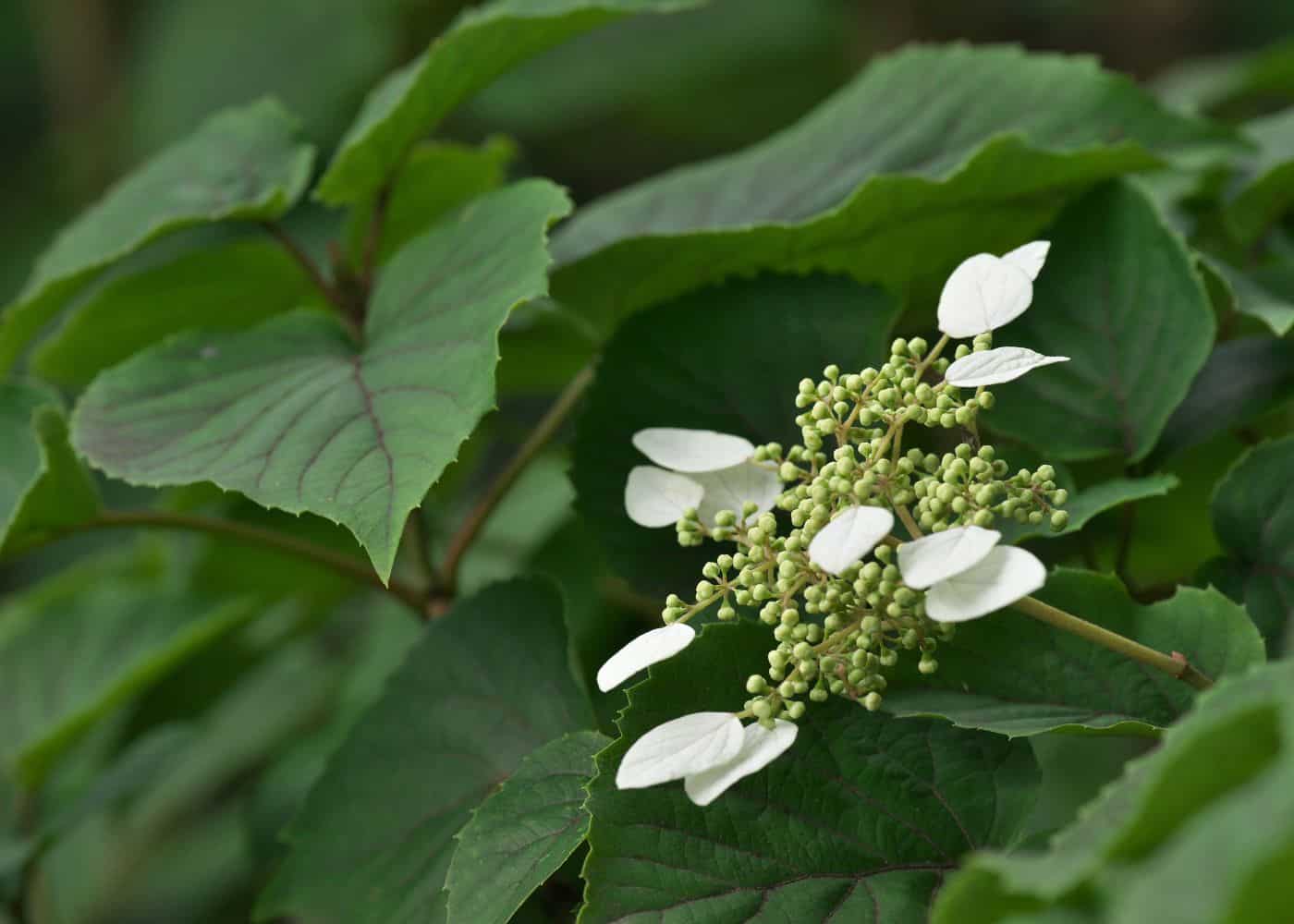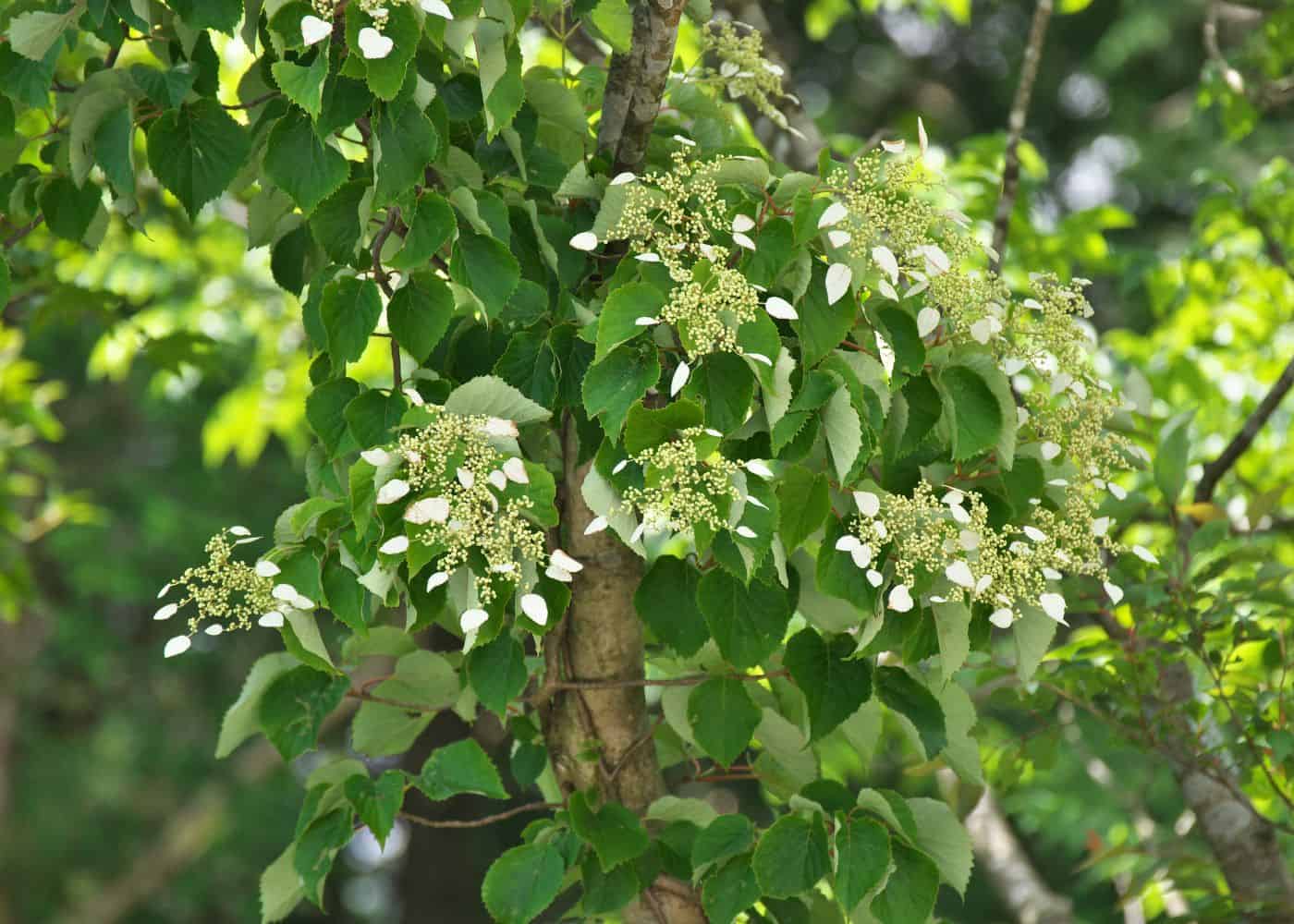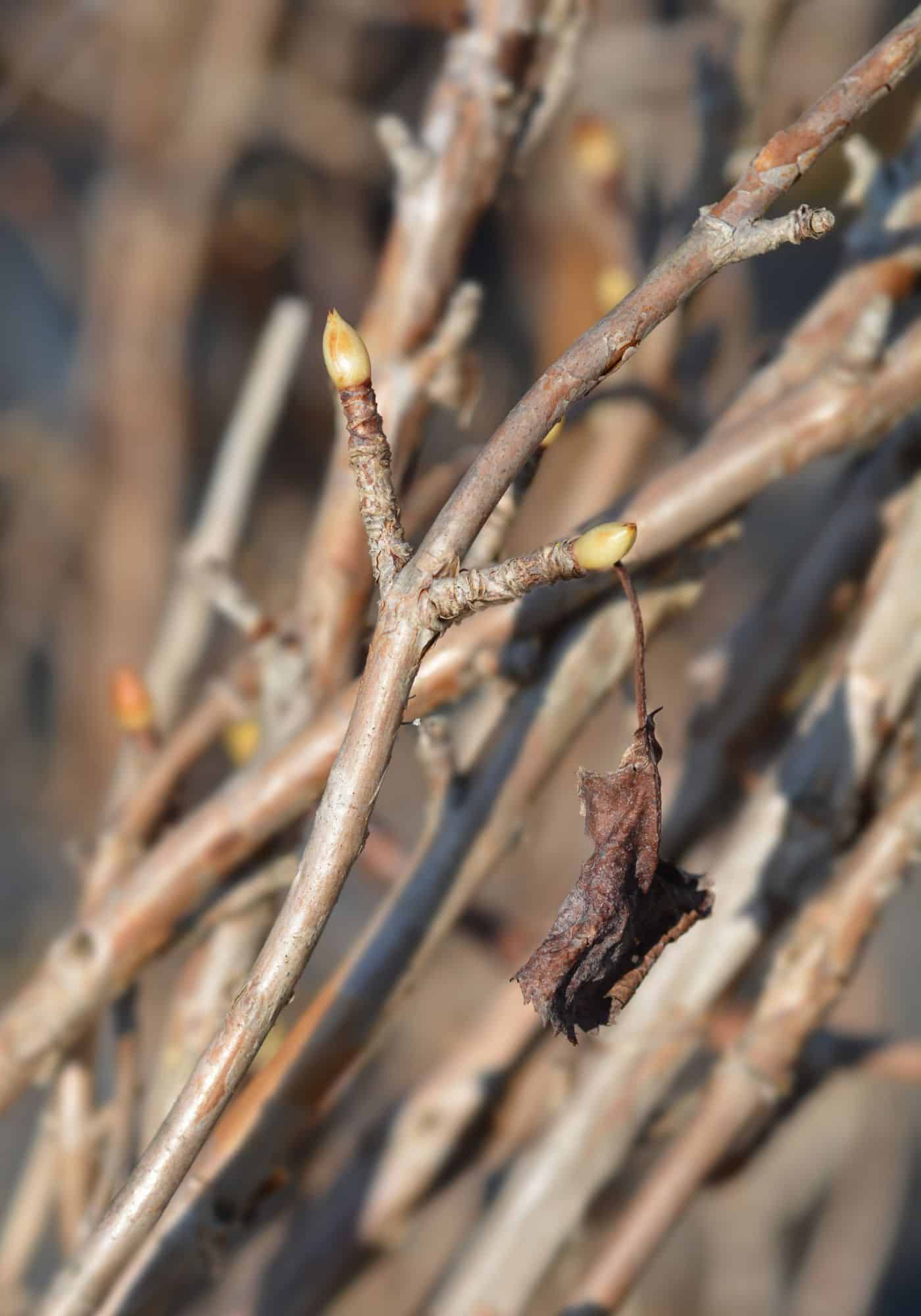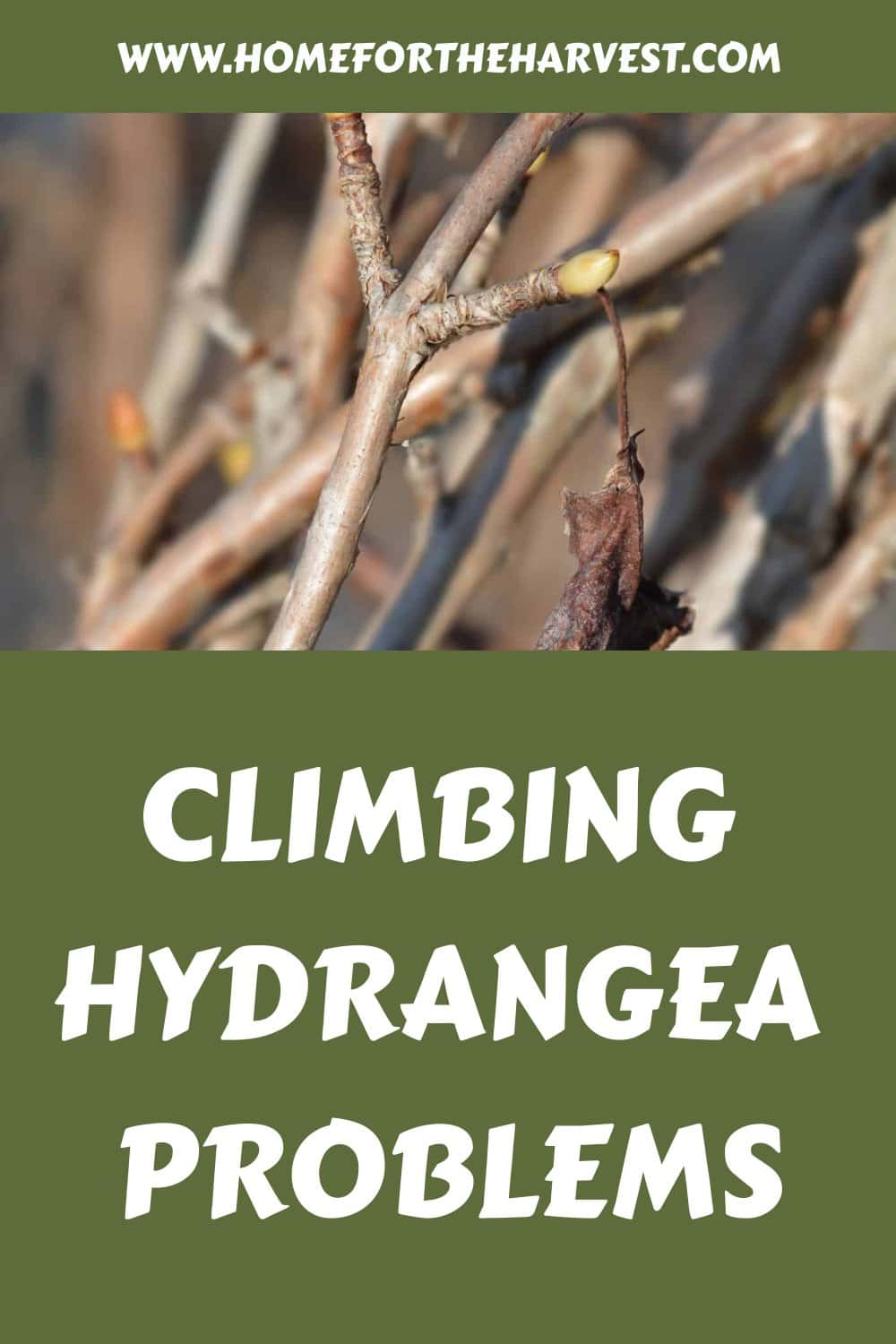The most common problem with climbing hydrangeas is the lack of blooms. This is usually caused by pruning the plant at the wrong time of year, but can also be caused by lack of light and/or nutrient imbalance. Climbing hydrangeas are also prone to certain fungal diseases, insect pests, and wildlife pests such as deer.
1. Climbing hydrangea won’t bloom
Unfortunately, climbing hydrangeas don’t always bloom as expected. These plants usually start blooming each spring about three years after planting. Sometimes they don’t bloom, and sometimes there are not many flowers. There are several reasons why this might be the case.
One common reason is pruning at the wrong time of year. If you prune your climbing hydrangea in winter or early spring, you may be cutting off flower buds before they have a chance to open up and bloom. Pruning should only occur during the summer or early fall after flowering has finished for the season.
Lack of sunlight can also affect the blooming of climbing hydrangeas. These plants need plenty of bright light in order to produce flowers, so make sure yours is getting enough sun throughout the day if it’s not blooming as much as you’d like it to!
Nutrient imbalance can also cause problems with flowering on these plants. Make sure your soil is well-balanced and contains all necessary nutrients for healthy growth and blooms by testing its pH level regularly and adding amendments if needed. Nutrients for the plant are generally most available when the plant is growing in neutral to slightly acidic soil.
Finally, broken branches can occur on climbing hydrangeas due to damage caused by storms or other environmental factors such as wind or heavy snowfall. It is important to inspect your plant regularly for any signs of damage and trim away any broken branches immediately so that new ones can grow back in their place without interruption.

2. Insect pests affecting climbing hydrangea
Unfortunately, hydrangeas can also be susceptible to insect pests like aphids, scale insects, and mealybugs. Identifying these pests is the first step in controlling them.
Aphids are small green or black bugs that feed on the leaves and stems of climbing hydrangeas. They often leave behind a sticky residue called honeydew which can attract ants and other insects. To control aphids naturally, you can spray them with water or use an organic insecticidal soap solution. You may also want to introduce beneficial insects such as ladybugs into your garden which will help keep aphid populations under control.
Scale insects are tiny white or brown bugs that attach themselves to the stems and leaves of climbing hydrangeas, where they suck out sap from the plant’s tissues. To get rid of scale insects naturally, you should prune off affected branches and dispose of them away from your garden area so as not to spread any further infestation throughout your yard. You may also want to introduce predatory mites into your garden which will help keep scale insect populations under control without using chemicals or pesticides on your plants.
Mealybugs are small white bugs with waxy coatings that feed on plant juices by piercing through their stems and leaves with their mouthparts while secreting a sugary substance called honeydew onto nearby surfaces. To get rid of mealybugs naturally, remove any visible infestations by hand-picking them off the plant and then spraying down affected areas with either rubbing alcohol or neem oil solutions, both available at most gardening stores near you. Additionally, introducing parasitic wasps into your garden will help reduce mealybug populations without having to resort to chemical treatments for this pest problem.
3. Wildlife pests that can threaten climbing hydrangea vines
Wildlife pests can be a major problem for climbing hydrangeas. Deer, rabbits, and squirrels are some of the most common culprits when it comes to damaging these plants. They can eat away at leaves and stems or even dig up roots in search of food. This can cause serious damage to your plant and prevent it from blooming properly.
The best way to protect your climbing hydrangea from wildlife pests is by using fencing or repellents. Fencing should be tall enough that deer cannot jump over it while also being buried deep enough into the ground so that rabbits cannot burrow underneath it. Repellents such as scent-based products or motion-activated sprinklers may also help keep animals away from your plants without causing any harm to them.
Another option is to use netting around the base of the plant, which will make it harder for animals like squirrels and rabbits to get close enough to do any damage. You could also try planting other species nearby that act as natural deterrents, such as lavender or marigolds – their strong scents often put off deer and other animals looking for a snack!
Inspect your climbing hydrangea regularly for signs of animal activity such as chewed leaves or bark scrapings on branches. This will help you identify if there’s an issue early on before too much damage has been done. With these tips in mind, you’ll be able to easily keep wildlife pests away from your precious climbing hydrangeas.
4. Common diseases of climbing hydrangeas
The most common diseases of vining hydrangea are powdery mildew and leaf spot.
Powdery mildew is caused by a fungus that grows on the leaves and stems of climbing hydrangeas. It appears as white or gray patches on the surface of the plant, which eventually turn brown and dry out. To prevent this disease from occurring in your garden, make sure you provide adequate air circulation around your plants and water them only at their base rather than overhead. Additionally, avoid overcrowding your plants so that there’s plenty of room for air to circulate between them.
Leaf spot is another common disease affecting climbing hydrangeas. This fungal infection causes dark spots with yellow halos to appear on the leaves of affected plants. If left untreated, it can cause defoliation and even death in extreme cases. To prevent leaf spot from spreading in your garden, remove any dead or diseased foliage immediately before it has a chance to spread further throughout the plant or other nearby vegetation. Additionally, try not to over-fertilize your climbing hydrangea; too much fertilizer, if applied incorrectly or excessively often, can encourage fungal growth on its leaves and stems!
Finally, always practice good hygiene when caring for your climbing hydrangea: keep tools clean after use (especially pruning shears) so as not to spread any existing infections onto healthy parts of the plant; never work with wet foliage since this encourages fungal growth, and avoid splashing water onto foliage while watering as this could also promote disease development.
5. Broken or dead branches or vines
Broken branches in climbing hydrangeas can be caused by a variety of factors, including heavy winds, ice storms, and even over-fertilizing. It is important to prune the broken branch immediately after it occurs to prevent further damage to the plant.
When pruning a broken branch on a climbing hydrangea, it is important to use sharp pruners or loppers and make sure that you are cutting at an angle away from the main stem of the plant. This will help ensure that no additional stress is placed on the remaining part of the branch when removing it. Make sure not to leave any jagged edges behind as this could cause injury or infection for your plant later down the line.
If you find yourself dealing with broken branches frequently due to extreme weather conditions such as strong winds or hail storms, there are steps you can take ahead of time in order to protect your plants from future damage. Installing windbreaks around vulnerable areas where these types of events occur most often can help reduce their impact on your garden significantly. Additionally, providing extra support for taller stems may also be beneficial during times when gusty winds come through unexpectedly; just make sure not to tie them too tightly as this could cause additional strain on already weakened limbs.

6. Other climbing hydrangea problems
Climbing hydrangeas can be susceptible to a variety of troubles that may prevent them from blooming or otherwise thriving. Over-watering or under-watering can cause the plant to become stressed and unable to produce flowers. Too much sun or too little sun can also lead to poor flowering and nutrient deficiencies caused by lack of fertilizer or improper soil pH levels.
To avoid over-watering, make sure your climbing hydrangea is planted in an area with good drainage and check the soil before watering. If it’s still damp, wait until it dries out before adding more water. To ensure your plant gets enough sunlight, choose a spot that receives at least four hours of direct sunlight each day. For proper nutrition, use a balanced fertilizer formulated for acid loving plants like hydrangeas every two weeks during spring and summer months when they are actively growing. Finally, test your soil’s pH level regularly using a home testing kit; if necessary adjust the pH level with lime or sulfur depending on whether you need to raise (lime) or lower (sulfur) the number accordingly.
Pests such as aphids and spider mites can also affect climbing hydrangeas; these pests should be treated promptly with insecticidal soap spray according to package instructions in order to keep them away from your plants. Wildlife such as deer and rabbits may nibble on young shoots so consider installing fencing around vulnerable areas if needed for protection against these animals.. Additionally, broken branches should be pruned back immediately since this will help promote healthy growth going forward while keeping unsightly damage away from viewable areas of the garden bed where possible.
FAQs about climbing hydrangea problems
Why is my climbing hydrangea turning brown?
Browning of climbing hydrangeas is usually caused by a lack of water or too much sun. If the plant has been in direct sunlight for extended periods, it can cause the leaves to dry out and turn brown. Additionally, if the soil around your climbing hydrangea is not kept moist enough, this can also lead to leaf discoloration. This usually happens first around the outside edges of the leaves.
To prevent further damage, ensure that you are watering your plant regularly and keeping it in partial shade when possible. Pruning away any dead branches can also help encourage new growth.
Do you cut back climbing hydrangeas?
Cutting back climbing hydrangeas is not generally necessary or even recommended. That said, any wood that is dead, damaged, or diseased should be removed as soon as it is observed.
Maintenance pruning is best done in summer after the flowers have faded. Cut out dead or damaged branches and remove any shoots growing too close together. This will help promote air circulation and light penetration to the center of the plant, encouraging strong growth throughout the season.
Where should I plant a climbing hydrangea?
When planting a climbing hydrangea, choosing an area with partial sun and moist soil is important. The best spot for this plant is in a location that receives morning sunlight but is shaded from the hot afternoon sun. It should also be planted in well-drained soil that retains moisture without becoming waterlogged.
When planting, make sure to dig a hole twice as wide as the root ball of your climbing hydrangea and mix some compost into the backfill before you fill in around the roots. Finally, water thoroughly after planting and mulch around your new addition to help retain moisture throughout its growing season.
How long does it take for a climbing hydrangea to grow?
Climbing hydrangeas take a few years to become established, but grow vigorously once they have settled in. They can grow 20-40 feet tall and wide, making them an ideal choice for those looking for a fast-growing vine.
Generally, it takes about 5-10 years for climbing hydrangeas to reach their full height and width. However, with proper care and maintenance they can grow faster Proper watering, fertilizing, pruning and mulching will all help the plant reach its full potential in less time. With patience and dedication you can enjoy the beauty of your climbing hydrangea in no time!







